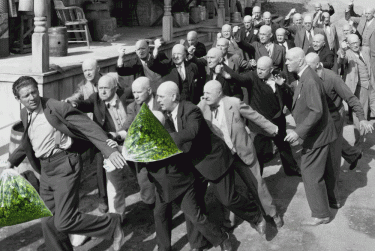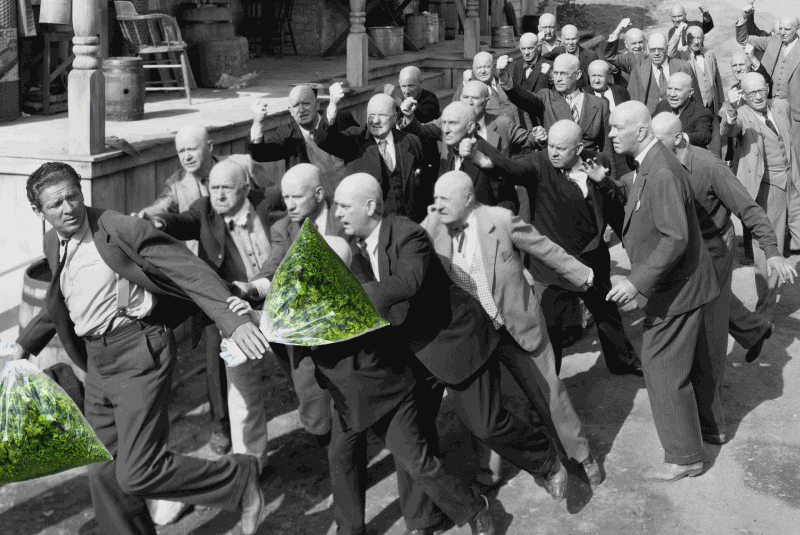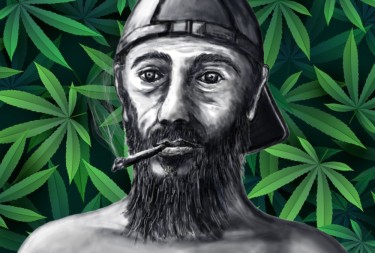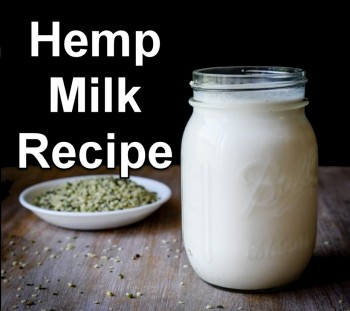
Cannabis Use Disorder Rhetoric is BS – and this is why!
A short while ago, I wrote an article talking about what a healthy relationship with cannabis looks like. I argued that the current definition for Cannabis Use Disorder is inaccurate and fails to reflect the average consumption rates of normal users in legal states.
In this article, I'll show you exactly how the establishment utilizes arbitrary and outdated rules to wrongly designate regular cannabis consumers as having CUD. This contradicts the market trends we're seeing as legalization spreads.
Let's look at how a recent study in JAMA Network Open utilized the official CUD criteria. First, they define CUD as having just two symptoms like increased tolerance, cravings, or using more cannabis than intended originally. Two symptoms and you've got a "disorder"!
But this simplistic binary approach doesn't match reality. Yes, some people develop unhealthy attachments to cannabis. But the majority of frequent users aren't addicts - they're just regular consumers who enjoy enhancing activities with cannabis.
Tolerance building is a normal biological process with any substance. Needing a bit more over time to achieve desired effects does not indicate addiction. It's just how our bodies work. Yet this normal adaptation could get you diagnosed with a psychiatric disorder!
Some days you may crave cannabis more than others - like desperately wanting a beer at the end of a long work week. But anticipating enjoyment isn't pathological. It's simply having favorite ways to unwind and connect with friends. Yet by the study's standards, this makes you disordered.
Perhaps you planned to save a new cannabis purchase for a special occasion, but ending up dipping into it earlier. Or you got extra high before a concert but used more than intended. By the researchers' criteria, this minor lack of self-control means you're addicted!
Do you see how questionable this all is? The disorder standards clearly don't distinguish normal consumer behavior from actual addiction. They take reasonable enjoyment and medical use and falsely twist it into a psychiatric pathology. This isn't science - it's propaganda.
Now let's talk about how these studies ignore critical market context. Daily or near-daily cannabis use is common among consumers integrating it into their lifestyle intentionally. This product exists legally for adult enjoyment - of course people are going to use it more than when it was prohibited!
With the incredible diversity of cannabis products and strains available today, it's perfectly normal to experiment until you find your favorites. Yet the researchers call this "problems in life due to use" rather than a legitimate process of preferences emerging.
What it comes down to is the study shoehorning all use patterns into a disease paradigm developed for truly dangerous drugs like opioids. Cannabis carries risks, but is generally benign compared to say alcohol which kills over 3 million people annually. 91% of cannabis users never develop problematic use.
Medical patients using cannabis daily aren't addicts - they're treating their conditions and improving quality of life. The authors ignore that cannabis has genuine therapeutic benefits and acts as if any frequent use is disordered.
Now, some people certainly use cannabis irresponsibly or in unhealthy ways. Those folks should receive help through education and harm reduction. But we must enact this nuanced approach while rejecting the drug warriors' goal of stigmatizing all frequent cannabis consumers.
In an environment of potent products and normalization, increased intense use by some is predictable. But most people self-regulate their enjoyment responsibly. So we should see frequent use as reasonable not disordered.
Blanket application of CUD criteria medicalizes and pathologizes patterns of use that are in fact normal and benign in the context of legal access. More nuanced analysis is required to accurately distinguish problematic use from typical enjoyment.
Well-intentioned harm reduction advocates must take care not to enable prohibitionists. Exaggerated scaremongering about "cannabis addiction" serves those who wish to roll back our hard-won legalization victories through misinformation.
What the data shows is the need for realistic cannabis education and prevention so that people make informed choices. Most adult consumers use moderately without issue. Disease rhetoric attempts to pathologize their reasonable enjoyment of a legal substance. We must push back against bad science.
Rising normalized cannabis use in legal states is not an epidemic. Prohibitionists manipulate statistics to claim typical consumer behavior is addiction. Don't fall for it. We must defend cannabis culture against agenda-driven disease paradigms. The future of legalization depends on exposing this propaganda.
If There's No Research, How Did The DSM Decide What's "Normal" Cannabis Use?
In my last article, I broke down how statistics on "cannabis use disorder" are exaggerated propaganda. The disease rhetoric misrepresents normal consumer behavior as pathological.
A key example is the DSM-V's arbitrary threshold for "disordered" use. It says using cannabis more than twice per week makes you an addict. But how did they arrive at this standard with no statistical basis?
The DSM criteria were created in the era of prohibition. There was minimal research on patterns of use in legal environments. So where did this mythical "two times weekly" cutoff come from? It seems totally random.
Some sources claim it was based on the mean frequency from limited surveys many decades ago. But applying dated statistics from prohibition to our current legal market makes no sense. Policymakers are using mismatched data to make sweeping claims about "addiction."
This contradiction highlights theweak foundation underlying cannabis use disorder science. If there aren't accurate large-scale surveys on usage patterns, how can researchers possibly determine normal from disordered behavior? Yet questionable standards like the DSM's are used to craft policies and misinform the public.
Anecdotal experience suggests far more than twice weekly use is common among healthy consumers. Responsible people integrate cannabis into their lifestyle for wellness, recreation, spirituality, or medical relief. Why should frequencies exceeding some random historical artifact automatically mean you're addicted?
A more reasonable assessment might define disordered use as consuming over 3-7 grams weekly on average. That allows substantial daily or near-daily use without stigma. Setting reasonable standards requires sociological and anthropological data on how average people integrate cannabis in legal climates, not outdated statistics.
Yet prohibitionists cling to arbitrary thresholds like the DSM's to pathologize higher but still moderate use. They manipulate the lack of formal research to spread fear. Without scientific evidence, any limits slapped on "acceptable" use are ideological, not empirical.
Calling typical consumers addicts is rhetoric, not science. But it powerfully influences perceptions. This creates stigma against medical patients and breeds confusion about what healthy cannabis use really looks like.
So we must ask critically: Why should statistically unsupported standards be permitted to define "normal" use? Where is the data demonstrating that exceeding these random cutoffs predicts addiction or life problems? The scientific basis is non-existent.
For a substance used ritually for millennia with low harm, flat standards make little sense. We don't designate "normal" drinking frequencies because moderate alcohol use depends on context. Cannabis requires a similarly nuanced approach based on lived experience, not abstract numbers.
If the DSM's architects want to classify lifestyle consumers as disordered, they should provide the research. Until then, these arbitrary criteria only enable propaganda attacking legalization. We must advocate for realistic standards that distinguish actual addiction from prohibitionist hype.
With no statistical foundation, calling typical use pathological is unethical. The DSM criteria attempt to codify Drug War stigma without data. In the era of legalization, we need a new marijuana science free from historical bias. Anything less is intellectual dishonesty.
Can We Do Anything About The DSM-V's Faulty Cannabis Criteria?
In short - not really. The DSM is published by the American Psychiatric Association, an influential organization of psychiatrists. Many of its members maintain antiquated views on substances shaped by the Drug War.
Further, the APA receives extensive funding from pharmaceutical companies. Unsurprisingly, these backers are not thrilled about cannabis disrupting their profits. This contributes to the DSM stigmatizing cannabis consumers.
As the quintessential psychiatric handbook, the DSM carries an air of infallible authority. In reality, as we've seen, its cannabis criteria lack empirical basis and ignore real-world consumer patterns. But questioning the psychiatry establishment's wisdom is heresy in policy circles. So faulty standards like "disordered after using twice weekly" endure.
Rather than hoping for top-down reform from biased institutions, the solution comes through grassroots advocacy. We spread awareness that the DSM's cannabis content is political propaganda, not objective science. Despite claims of expertise, these prohibitionist standards do not reflect moderate cannabis use.
You know yourself and your relationship with cannabis better than any manual written by prohibitionists. If you use frequently but remain responsible and happy, don't let the DSM's arbitrary thresholds make you feel disordered.
We change the narrative through confidently modeling healthy cannabis lifestyles beyond outdated disease paradigms. The truth emerges not from dusty policy manuals, but living consciously. Never forget: the power lies with us, the people. We will reform these delusional cannabis criteria from the ground up.







